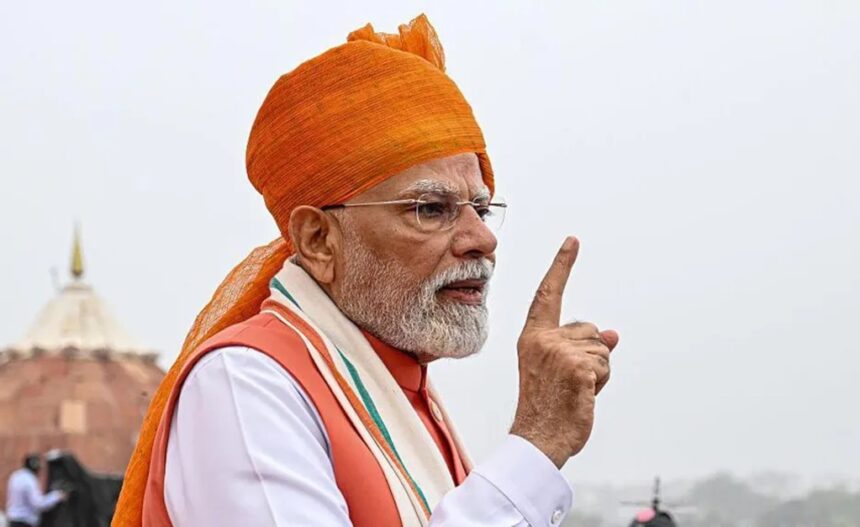NEW DELHI – The ongoing war in Ukraine has pushed Western governments to act. The US and European Union have moved swiftly to cut the funding behind Russia’s offensive, hoping to restrict Moscow’s ability to continue its campaign.
Yet, while these allies tighten sanctions, Prime Minister Narendra Modi’s India has kept its foot on the gas, increasing oil purchases from Russia. Critics say Modi’s government is putting short-term profit and political allies ahead of Ukrainian lives, straining ties with Western nations.
India now stands as one of the world’s largest buyers of Russian oil. Since Russian troops invaded Ukraine in February 2022, Indian imports from Russia have surged. Russian crude makes up about 35 percent of the country’s total supply, up from just 0.2 percent before the war.
Analysis from Kpler shows India imported around 1.75 million barrels per day from Russia between January and June 2025, slightly more than last year. The money from these sales goes straight into Kremlin coffers, supporting Russia’s ability to keep fighting in Ukraine. While the US, EU, and G7 have capped Russian oil prices, India has worked around these limits, buying at a discount and exporting refined products for profit.
This has not gone unnoticed in Washington. President Trump was blunt in his criticism through a social media post on July 30, 2025, calling out India for buying “massive amounts of Russian oil” and re-exporting it at a profit.
He accused Modi’s government of ignoring the devastation caused by Russian forces in Ukraine. Trump’s anger has translated into new tariffs. On August 7, he ordered a 25 percent tariff on Indian goods, with another 25 percent hike effective today. Even under this economic strain, the Modi government shows no sign of backing down.
Champion of peace and neutrality
Modi has often described India as a champion of peace and neutrality. The “non-alignment” policy lets India maintain close connections with both Washington and Moscow. Earlier this year, Modi visited the White House. At that time, Trump and Modi pledged to double trade between their two countries by 2030.
Months later, that good mood has faded. India’s refusal to reduce Russian oil imports suggests that Modi values economic stability and political support at home over international unity against Russia. India’s foreign ministry has dismissed the tariffs as “unjustified and unreasonable,” insisting that its oil trading is legal and has kept global energy markets steady. Critics argue that this stance ignores the cost of funding a war.
India’s leaders defend these purchases as a response to their country’s energy needs. With nearly 1.4 billion people and 90 percent of oil imported, India remains sensitive to price shocks. Discounts on Russian oil reached as much as $40 below international benchmarks in 2022, providing a huge benefit to Indian refiners such as Reliance Industries and Nayara Energy, which have strong links to top politicians.
These companies have profited by processing cheap Russian crude, then selling fuel overseas, especially where sanctions on refined products don’t apply. The extra revenue keeps pump prices stable at home, helping to maintain Modi’s popularity. Yet those savings come at a price, as money funnels from Indian firms into Russia’s military budget.
This stand-off is not only about business. Modi has styled himself as a tough leader, eager to show resistance to foreign pressure. After Trump’s tariff threats, Indian officials doubled down, saying their oil decisions depend on practical concerns like supply routes and price.
Foreign ministry spokesperson Randhir Jaiswal highlighted the long-standing partnership with Russia, dating back to Soviet times. Such tough talk connects with nationalists at home, who see defying the West as a point of pride. However, the risk is clear; India could lose a valuable ally just as the Ukraine situation grows more urgent.
India is neutral and advocates peace
The contradiction in India’s policy is hard to ignore. Modi has repeatedly met with Putin since the war began. At a BRICS meeting in 2024, he praised the “time-tested” connection with Moscow. Yet Modi also claims India is neutral and advocates peace. This careful balancing act has become harder to sell.
Trump’s push to end the Ukraine war is central to his foreign agenda, with heavy tariffs threatened against any nation still trading with Russia after an August 8 deadline. Trump’s deputy Stephen Miller said flatly on Fox News that Washington will not accept India’s continued business with Russia, calling out the government for helping to fund the war.
Officials in New Delhi say the West has its own business links to Russia, pointing to trade in fertilizers and chemicals and nearly $5.2 billion in US-Russia trade last year. India’s leaders claim that buying Russian crude has kept worldwide prices stable and protected consumers everywhere from even higher costs.
In practical terms, India’s appetite for Russian oil has reduced pressure on Middle Eastern suppliers, helping prevent a repeat of the price spike seen in March 2022. These points have some weight, but don’t erase the fact that billions continue to flow to Russia each month, money used to fuel attacks across Ukraine.
There are already signs of trouble. Trump’s tariffs target Indian sectors like textiles, jewellery, and auto parts, threatening huge losses and putting millions of jobs at risk. India’s trade ministry has promised to defend its economy, but a 50 percent tariff could cause real harm.
Modi’s tough approach might play well at home, but his refusal to cut ties with Moscow could wreck relations with the United States, once a central part of his foreign policy. The dispute has grown personal, with Indian officials upset over claims that the US helped broker a ceasefire in the India-Pakistan conflict this spring. The fallout from this row has only hardened India’s position, making any compromise less likely.
For anyone watching from the States, the broader message is unsettling. While Modi talks of peace, his government’s actions signal profit over principle and a cold shoulder to Ukraine’s suffering. The US views its allies as partners in the effort to put pressure on Russia, and expects them to stop funding the war.
Trump’s tariffs show that there will be real consequences for ignoring calls for solidarity. Modi’s decision looks risky, both for India’s global reputation and for the people still caught in the crossfire in Ukraine.















